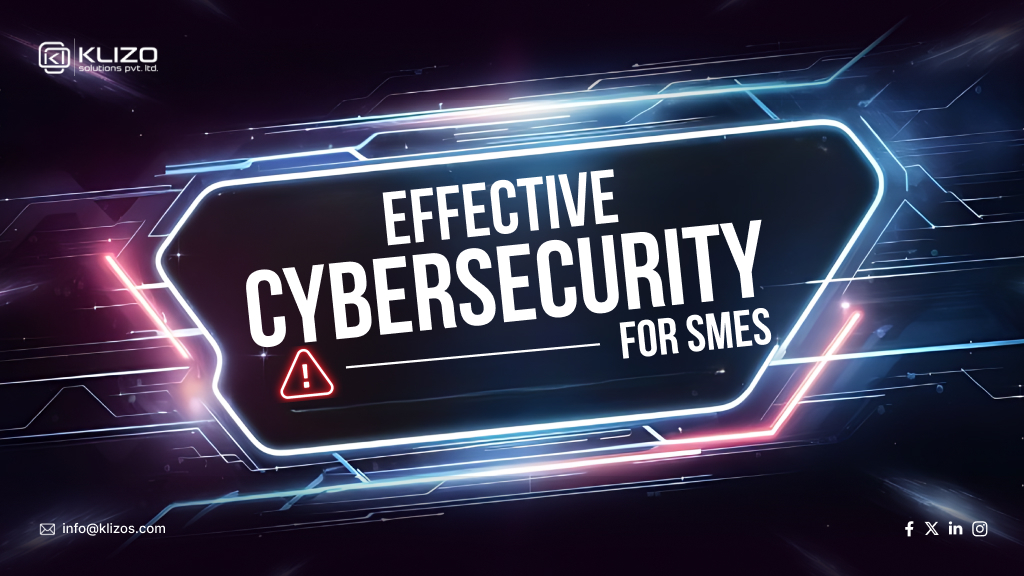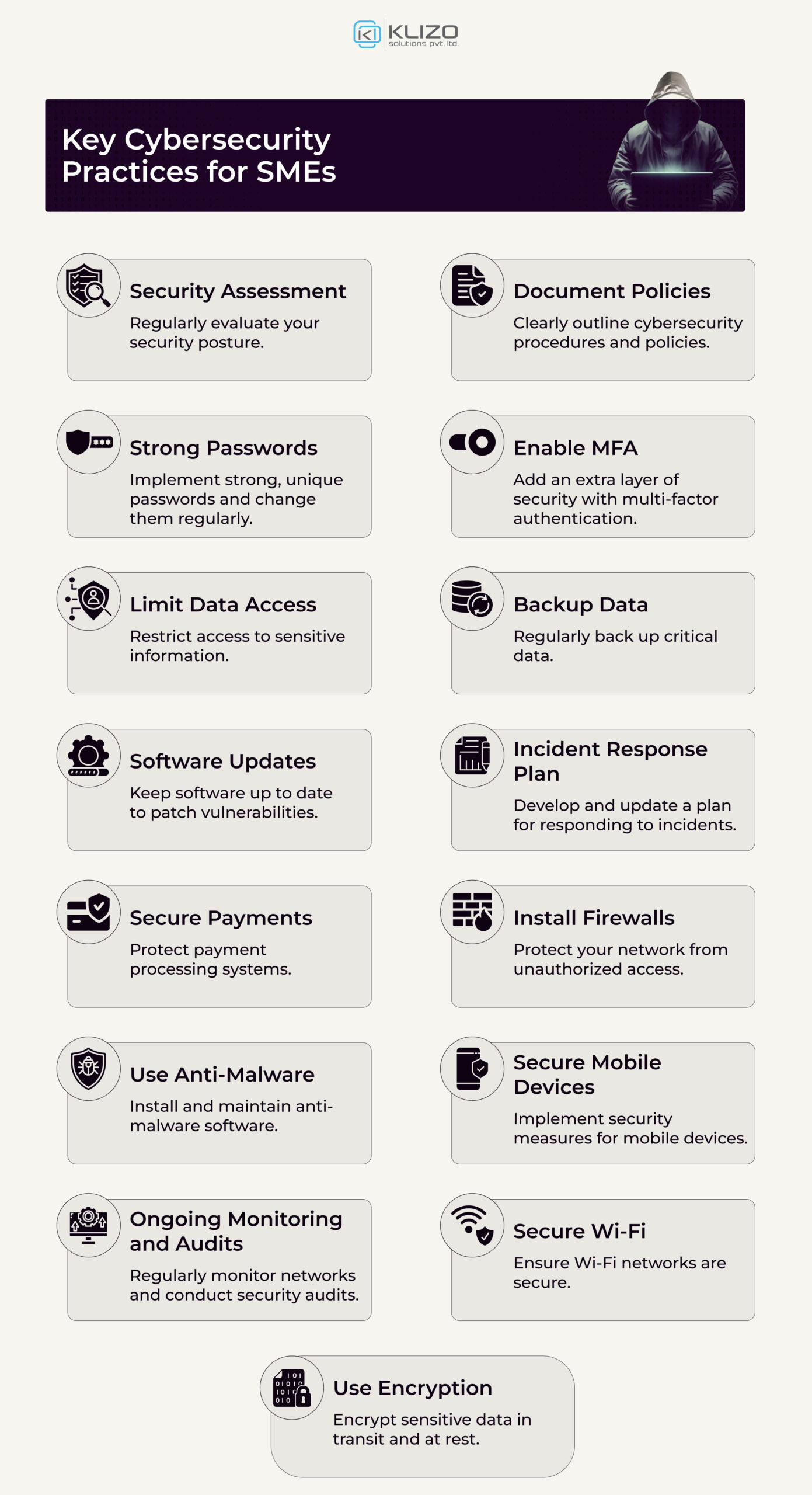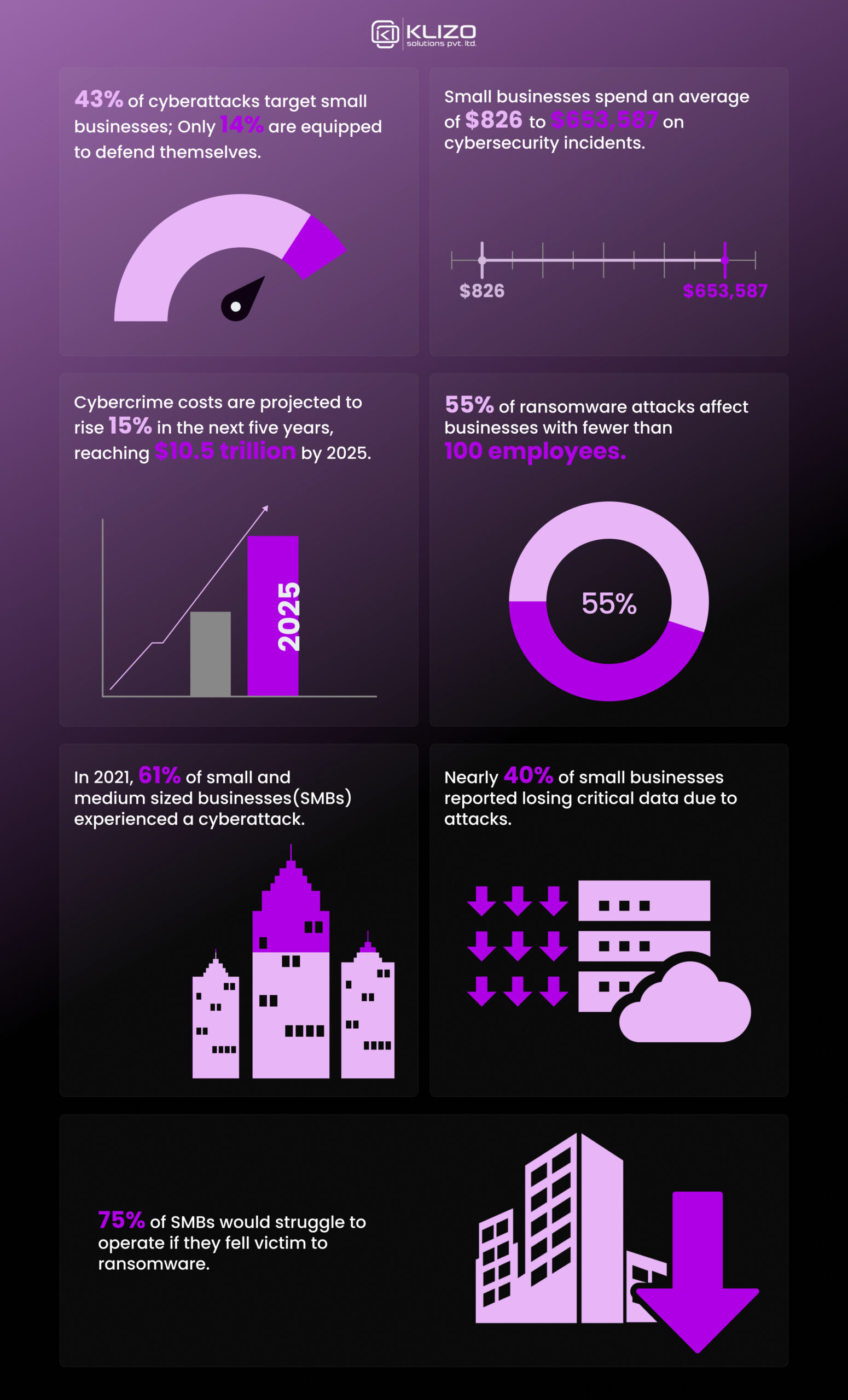


Did you know that 43% of cyberattacks target small businesses, but only 14% are prepared to defend against them?
This alarming statistic raises a critical question: are you doing enough to protect your small or medium-sized enterprise (SME) from the ever-evolving landscape of cyber threats?
As digitalization continues to flourish, the risk of cyberattacks looms larger. From data breaches to phishing scams, the implications of inadequate cybersecurity for SMEs can be devastating—not just for your bottom line but for your reputation and customer trust as well!
Imagine waking up one morning to find your business’s sensitive data compromised, customer trust shattered, and your hard-earned reputation in jeopardy. Scary, right?
Unfortunately, this is a reality for many small and medium-sized enterprises (SMEs) today that lack cybersecurity strategies!
So, in this article today, we’ll delve into the essential cybersecurity for SMEs best practices, ensuring you know how to fortify your defenses and safeguard your business against potential threats.

Regularly evaluating your security posture is crucial for identifying vulnerabilities and ensuring your business is prepared for emerging threats. A security assessment systematically reviews current security measures, potential risks, and areas needing improvement.
Here’s why you must perform regular security assessments:
According to reports, the majority of data breaches result from vulnerabilities that were known but not addressed. So, regular assessments can help uncover these vulnerabilities before cybercriminals exploit them, making cybersecurity for SMEs essential for maintaining data integrity.
Clearly outlining cybersecurity procedures and policies is essential for effective cybersecurity for SMEs.
After all, well-documented policies provide a framework for employees, ensuring they understand their roles and responsibilities in maintaining security and compliance.
For example, if an employee is uncertain about the proper protocol for sharing confidential client data, a well-documented policy can guide them, reducing the risk of accidental data breaches.
Also, it clarity fosters a culture of cybersecurity awareness within the organization, empowering your staff to act appropriately in the event of a threat.
Companies like Target have faced significant consequences due to unclear data handling procedures; their 2013 breach resulted in substantial financial losses and reputational harm, underscoring the need for robust cybersecurity for SMEs.
Remember, clear policies not only enhance security but also contribute to overall business resilience.
Implementing strong, unique passwords is another great way of enhancing cybersecurity for SMEs.
So, go ahead and encourage your employees to create complex passwords that combine letters, numbers, and symbols, as these are harder for cybercriminals to guess.
Plus, regularly changing passwords further strengthens security, making it more difficult for unauthorized users to gain access.
In a recent survey, 81% of data breaches were linked to weak or stolen passwords, highlighting the importance of robust password practices in maintaining cybersecurity for SMEs.
Enabling Multi-Factor Authentication (MFA) means adding an extra layer of cybersecurity for SMEs. MFA requires users to provide two or more verification methods to access their accounts, significantly reducing the risk of unauthorized access.
Do you know?
Even if a password is compromised, the additional verification method (e.g., a one-time code) helps prevent unauthorized access.
If an attacker obtains a password, they still need the second factor to gain entry, making it much harder for them to succeed.
Plus, implementing multi-factor authentication (MFA) not only strengthens security but also ensures compliance with regulatory standards.
Restricting access to sensitive information based on job roles is another effective way of ensuring cybersecurity for SMEs. Plus, implementing the principle of least privilege (PoLP) minimizes the risk of data breaches.
Here’s how you can limit data access and adhere to PoLP:
Regularly backing up critical data is a vital cybersecurity practice for small and medium-sized enterprises (SMEs). In the event of a cyber incident, data loss, or hardware failure, having reliable backups ensures that you can recover essential information and maintain business continuity.
Regular data backup means:
Keeping software up to date is crucial for maintaining strong cybersecurity for SMEs.
Yes, regularly updating all applications, operating systems, and firmware helps patch vulnerabilities that cybercriminals may exploit.
Here are some key points to consider:
A well-developed and regularly updated incident response plan is essential for effectively managing security incidents in the context of cybersecurity for SMEs.
This plan should outline procedures for identifying, containing, and recovering from cyberattacks:
Protecting payment processing systems is critical for preventing fraud and data breaches, which is a key aspect of cybersecurity for SMEs.
Here are some best practices to enhance payment security:
To strengthen cybersecurity for small and medium-sized enterprises (SMEs), it’s essential to combine firewalls and anti-malware software for comprehensive protection.
By integrating firewalls with anti-malware software, SMEs can achieve maximum security:
Remember, this layered approach enhances the overall cybersecurity for SMEs, allowing you to focus on growth while keeping your data secure.
We all know that mobile devices are essential tools for productivity. However, they also pose significant cybersecurity risks, especially for small and medium-sized enterprises. Implementing robust security measures for mobile devices is crucial to safeguarding sensitive company data.
To boost cybersecurity for SMEs through mobile devices, here’s what you can do:

Ongoing monitoring and regular audits are fundamental practices for maintaining strong cybersecurity for SMEs.
With the growing number of cyber threats, continuous vigilance is necessary to protect valuable data and ensure compliance with industry standards. Here’s how to effectively implement these practices:
Securing Wi-Fi networks is vital for protecting sensitive data and thus boosting cybersecurity for SMEs. Wondering how to do it? Then, here’s how:
For example, a small business can create a guest network for visitors, ensuring the main network remains secure and accessible only to employees.
Encryption plays a crucial role when it comes to boosting cybersecurity for SMEs as it protects data from unauthorized access, ensuring that even if it is intercepted or stolen, it remains unreadable without the proper decryption keys.
Encrypting data both in transit and at rest ensures that information remains protected from unauthorized access.
For instance, a small business handling customer information can implement encryption protocols for emails and file storage. This will not only secure sensitive data but also build customer trust, as clients will feel more confident knowing their information is protected.
A report by Verizon found that 38% of data breaches involved the theft of sensitive information, emphasizing the importance of encryption in maintaining cybersecurity for SMEs and mitigating potential risks.

In a world where cyber threats are relentless, embracing effective cybersecurity for SMEs is no longer an option but a necessity and a strategic advantage.
By implementing the best practices and cybersecurity strategies discussed, you can protect your business’s data, maintain customer trust, and ensure long-term success.
At Klizo Solutions, we understand the importance of cybersecurity for SMEs in today’s digital landscape. Our expert developers are dedicated to creating apps and websites that prioritize security, incorporating advanced features to mitigate risks and protect sensitive information.
Whether it’s through encryption, secure coding practices, or regular updates, we ensure that your digital presence is safe from cyber threats. With Klizo Solutions by your side, you can focus on growing your business while we care for your security concerns. Let us help you build a secure future!
Previous article
Joey Ricard
Klizo Solutions was founded by Joseph Ricard, a serial entrepreneur from America who has spent over ten years working in India, developing innovative tech solutions, building good teams, and admirable processes. And today, he has a team of over 50 super-talented people with him and various high-level technologies developed in multiple frameworks to his credit.

Subscribe to our newsletter to get the latest tech updates.